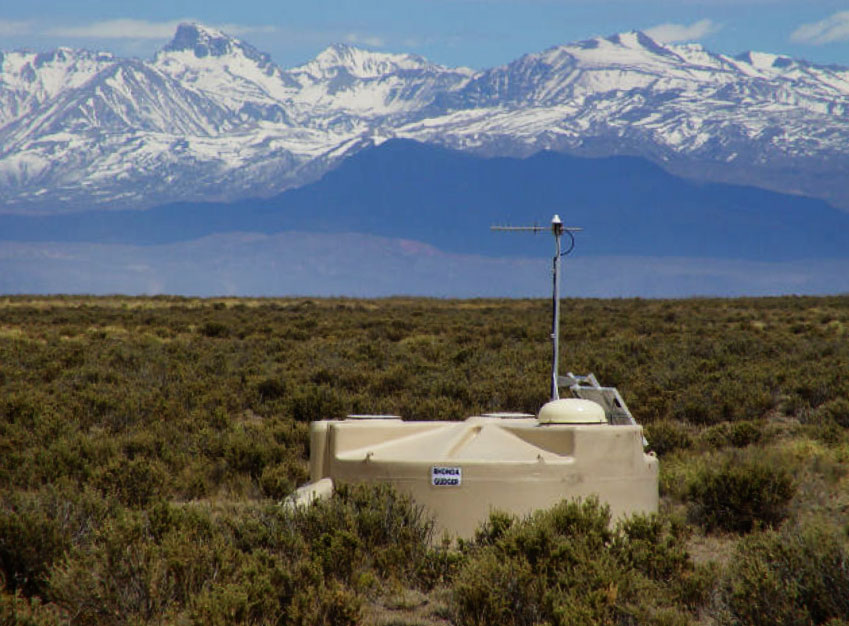 |
 |
 |
 |
 |
 |
 |
 |
 |
 |
 |
 |
|
Research
|
 Pierre Auger Observatory Website On the vast plain known as the Pampa Amarilla (yellow prairie) in western Argentina, a new window on the universe is taking shape. There, the Pierre Auger Cosmic Ray Observatory is studying the universe's highest energy particles, which shower down on Earth in the form of cosmic rays. While cosmic rays with low to moderate energies are well understood, those with extremely high energies remain mysterious. By detecting and studying these rare particles, the Auger Observatory is tackling the enigmas of their origin and existence. Cosmic rays are charged particles (usually a proton or a heavy nucleus) that constantly rain down on us from space. When a cosmic ray particle reaches Earth, it collides with a nucleus high in the atmosphere, producing many secondary particles, which share the original primary particle's energy. The secondary particles subsequently collide with other nuclei in the atmosphere, creating a new generation of energetic particles that continue the process, multiplying the total number of particles. The resulting particle cascade, called ''an extensive air shower,'' arrives at ground level with billions of energetic particles extending over an area as large as 10 square miles. News & Highlights
|

